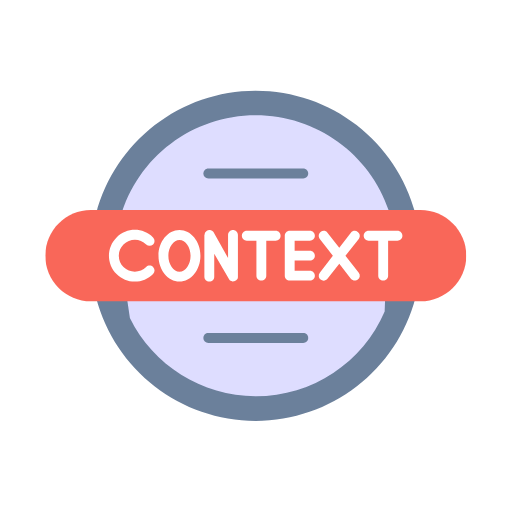Introduction
We can’t deny that AI is reshaping careers once considered untouchable, from content writers (guilty as charged) to graphic designers. But that doesn’t mean our jobs are doomed. If one door closes, don’t just knock – break it open and walk in with even more energy.
Even though AI grows more powerful every day, you’re still in the driver’s seat. The magic isn’t just in AI itself, but in how you talk to it. A vague prompt gives vague results, but a clear, specific prompt can turn average output into content people want to read, share and engage with.
Think of AI like a super-skilled intern who can write, design, research and generate images in seconds, but only with the right instructions. Without proper guidance, it’ll produce something mediocre that misses your tone, audience, or goal.
That’s why being a strong prompt generator matters. A well-crafted prompt isn’t just a request; it’s a blueprint. It sets the context, style, and audience, and provides AI with the raw materials to deliver exactly what you envision.
Things to Remember While Writing a Prompt
If you’ve ever asked AI to do something and got back a jumble of “meh,” don’t panic; the problem isn’t the AI, it’s the way you asked. Every great prompt generator (whether it’s a tool or you, in full genius mode) knows that good instructions are like good coffee: strong, clear, and impossible to misinterpret.
1. Get oddly specific
“Write a blog” is basically AI small talk. “Write a 500-word blog in a fun-but-professional tone about why small businesses should use WhatsApp marketing, with three bullet-point tips” is where the magic happens. Your AI can only hit the target if you actually draw one.

2. Spill the tea (a.k.a. give context)
AI doesn’t know if you’re writing for CEOs sipping lattes or teenagers binging Instagram reels, unless you tell it. Share the backstory, the audience, the vibe… basically, give it the gossip it needs to perform.

3. Break it down
If your prompt is one long sentence with five ideas squished together, AI will treat it like a salad and toss it. Instead, serve it in courses: “First do this, then do that.” It’s tastier that way.

4. Play the long game
Your first try won’t always be a masterpiece. That’s okay. A true prompt generator knows the secret sauce is in tweaking, testing, and tweaking again until the AI starts reading your mind (or at least fakes it really well).
Examples of Prompts
When it comes to AI, the prompt is the script and you are the director. A good prompt generator doesn’t just throw random lines at the AI and hope for magic. It plans, sets the scene, and gives the AI exactly what it needs to shine.
1. To Generate Text Content
Think: blog ideas, product descriptions, email drafts, social media captions or anything with words.
Before you write: Decide on your tone (fun, formal, persuasive, professional, informative), your audience (teenagers, entrepreneurs, college students), and your purpose (to inform, sell, or entertain). If you want to give AI an example, do it after it generates its first draft. Why? Because if you give the example upfront, AI may copy parts of it, from the style to the exact words, instead of creating something original.
Example Prompt:
“Write a 150-word Instagram caption in a friendly, playful tone, promoting a coffee shop’s new caramel latte, with a pun in the first line and a call-to-action at the end. The name of the shop is Moonbucks”
Why it works: It’s clear, specific, and leaves no room for AI guesswork. You have set the tone, the goal, and the style all in one go.
2. To Generate an Image
Think: a digital painting, a realistic photo, an abstract concept or a cartoon image.
Before you write: Picture it in your head first and then describe the subject, mood, style, lighting, and colors like you are painting it with words.
Example Prompt:
“A superhero dog saving the day in a city made of giant cupcakes, flying through the sky with a cape, comic book style.”
3. To Generate Content Directly from the Web
Think: fresh news, latest stats or current trends.
Before you write: Be specific about what data you want, where it should come from, and how you want it presented.
Example Prompt:
“Summarize the top 3 news headlines about renewable energy from the last 48 hours in a neutral, easy-to-read tone, using bullet points.”
Common Prompt Mistakes to Avoid
Even the best prompt generators slip up sometimes. Here are some classic blunders and how you can fix them to get AI working just the way you want.
1. Being too vague
A vague prompt is like ordering “food” at a fancy restaurant. You might get a salad, or you might get a bowl of soup. But chances are, it won’t be exactly what you craved.
Wrong: “Write something about travel.”
Right: “Write a fun blog intro about solo backpacking in Europe for young adults.”
See the difference? The second prompt is clear about the style, topic, and audience, so the AI doesn’t have to guess.
2. Overloading with irrelevant details
Throwing in every little thing you think about might seem helpful, but too much clutter confuses the AI and dilutes the focus.
Wrong: “Write a story about a cat singing in front of an audience wearing a blue hat with red stripes, the audience has dogs, rabbits, and birds, it’s raining outside but there’s a rainbow, and the cat sings jazz.”
Right: “Write a short, funny story about a cat performing jazz for an audience of animals.”
Keep it simple but focused, AI will fill in the rest without drowning in specifics.
3. Forgetting to set tone or audience
If you don’t say whether you want the content serious, funny, formal, or casual, the AI might just pick something bland and boring. And no one wants that.
Wrong: “Explain blockchain.”
Right: “Explain blockchain in a fun, easy-to-understand way for college students.”
Tone and audience give the AI the vibe and style to nail your content.
By avoiding these mistakes and writing clear, focused prompts, you become the ultimate prompt generator, guiding AI to deliver exactly what you need, every time.
Conclusion
Mastering the art of prompting isn’t just a nice-to-have skill, it’s your secret weapon in the AI era. Think of yourself as the ultimate prompt generator, the director behind the scenes who turns raw AI power into content gold.
Remember, AI is only as good as the instructions you give it. Be clear, be specific, and don’t be afraid to experiment. The better your prompts, the better the results and that means more engaging content, sharper images, and fresher insights delivered in no time.
So go ahead, break down your ideas, set the scene, and give AI the blueprint it needs to shine. Because when you know how to prompt like a pro, the possibilities are endless—and the future? Well, it’s looking pretty bright.
